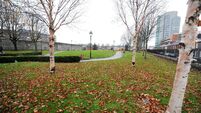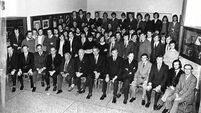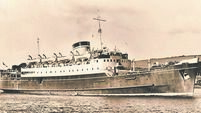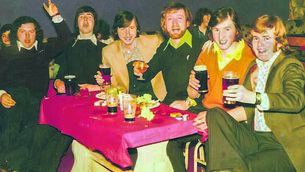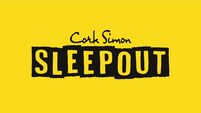Cork’s secret tunnels underneath our feet!
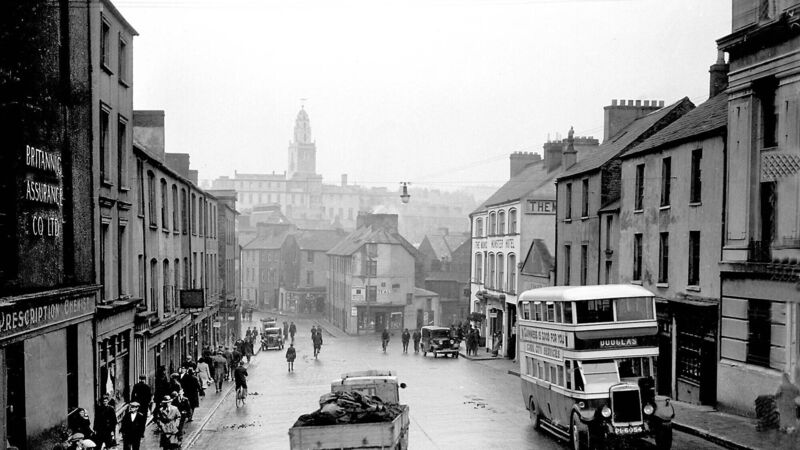
Coburg Street, Cork city, in 1936. A tunnel leads from here to Patrick’s Hill, built to allow traffic to use the steep hill.
LAST week, in Throwback Thursday, we had Pat Kelly’s stories about Coburg Street in older times, sparked by the current redevelopment works going on there.
One fascinating piece of information he supplied concerned a mysterious tunnel. Here is a reminder of what he said:
“The city limits were once at Fitzgeralds Bakery. There was a blocked tunnel here, and a bunch of the lads took some blocks out, and climbed into the tunnel to see where it led. According to them, it emerged at Patrick’s Hill and Hardwick street.”
Well, that was something we all surely wanted to know more about, and I for one didn’t have to wait long. I got a call from my brother, Tom, who is another expert on old Cork.
“I know that tunnel from Coburg Street up to Patrick’s Hill,” he declared. “Back in the early ’60s, the Cork Gliding Club (in which our father, the inimitable Joey, was much involved) had its base at the old Munster Hotel there.
“If you went out into the back yard, you could see a blocked up archway leading towards the hill above.”
He never got in there himself, Tom says regretfully, but knows exactly how and why it came into existence.
“It was to do with reshaping the very steep hill to make it usable for cars. It had to be built up in places, and the archways were where the road was lifted up - like flyovers today, if you like.”
Did Tom stop there in his reminiscences? He did not.
Did I know that there was actually a lost tunnel in the old Christian Brothers building (which held the whole block between MacCurtain Street and Wellington Road)? No, I most certainly did not. Tell me more!
“It was when they were redeveloping that whole site where the school had been, and of course I went in to have a look around.
“Right at the back of the stage (where so many former CBC boys will remember participating in Gilbert & Sullivan performances, directed by James N. Healy) behind a lightweight wall, was an archway leading into a tunnel. It was quite low down, and unfortunately blocked up, but it led right underneath Wellington Road.”
Now what could have been the reason for that? Another raising of a road to improve traffic flow? A secret passageway to somewhere? (Stop thinking those scurrilous thoughts, Scoil Mhuire was well to the north along Wellington Road). Will we ever know? Any suggestions of course will be welcomed!
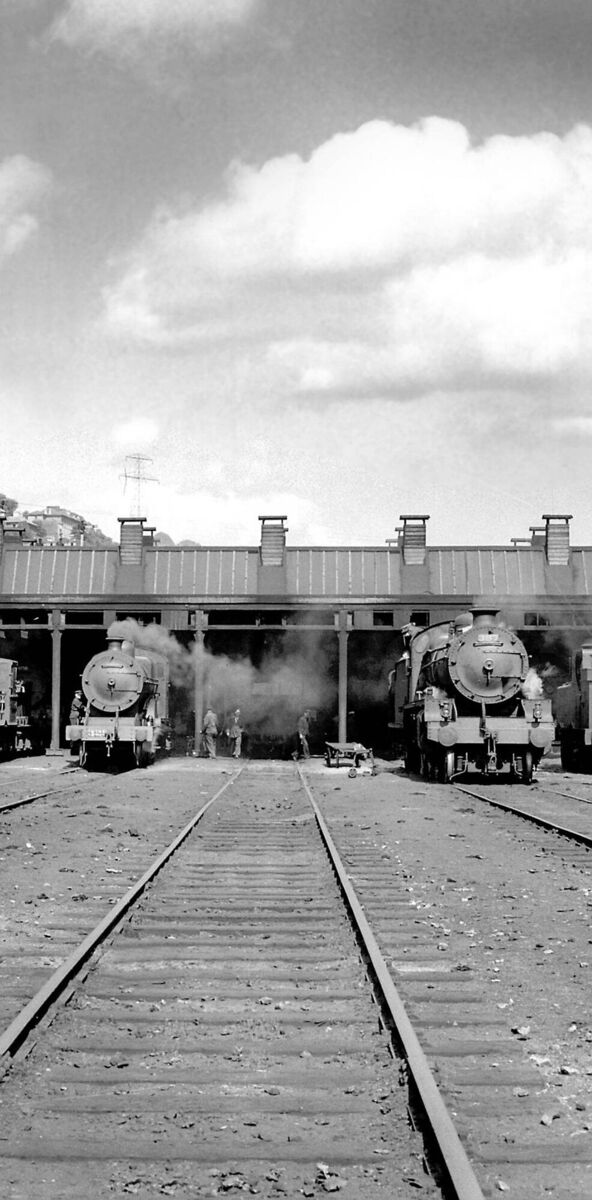
So that’s it with tunnels then, is it? Well no.
Apparently (says Tom) if you stand in Kent Station with your back to the actual building itself, you can see the outline of archways which once led through to the old Summerhill railway line.
“There used to be an old telegraph pole down there on that former railway line, where Mr Minta used to breed his Alsatians. One day, I noticed that the pole had actually fallen, so I climbed down and went to investigate. There was a very deep hole there, so I got a ladder and climbed down.
“It was clearly a tunnel leading through to Kent Station, but looked rather dangerous and partly collapsed, so I didn’t go in.
“I notified the engineer at the station and they came up and repaired and blocked and made it all safe again.”
This was another incidence of adapting roads to railways. When the tunnel through from Kilbarry in Blackpool was finally built, it was 15’ high and because of that, the Lower Glanmire Road had to be raised, again like a flyover, so as to clear the tunnel below.
What a lot of work it must all have taken, yet we hardly think of it when we navigate the traffic on the Lower Road heading for Tivoli today. History underneath our very feet and wheels.
I seem to remember that some time last year (or even the year before) we heard here on Throwback Thursday of a mysterious tunnel down in Blackrock, near Dundanion, which was held to be either a discreet entrance for servants to the big houses or an escape route for those fleeing the law.
Tom tells me that Hugh Sherrard, whose family owned Maryborough House for generations, knew of a similar tunnel from the cellars there, but didn’t know where it came out, as it had long been disused and blocked up.
The only tunnel this writer can definitely confirm is that one under the grounds at Castlemartyr, once a religious establishment, now a top flight hotel. As children, we crawled through it, bumping our heads on the flat stones of the roof (it was very low, barely high enough to traverse on hands and knees).
Curiously enough, it came out at a marshy pond, but in all probability the pond hadn’t been there when the tunnel had been constructed. It was probably what is known as a souterrain, or underground passage used principally for storing food or hiding valuables.
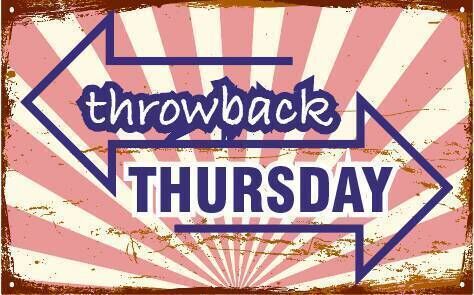
For heaven’s sake, don’t go charging down to Castlemartyr demanding to see the tunnel. It has almost certainly been blocked up.
All this just goes to show that we really have no idea how much of old Cork is hidden underneath the new.
Just occasionally, a strange name for a laneway, an unexplained corner, some half-hidden steps, make us stop and wonder what was here, and why. For anyone keen on local history, always ask that question - what and why? A search through older maps of the city will often give the answer.
Does anyone remember the Grand Circle Bar, which was in its heyday when we still enjoyed the old Opera House?
And how about Faulkener’s Lane, now completely disappeared, with its legendary Kealy’s bar, frequented by all the staff at the Echo and the Examiner? Now there is yet another unsuspected tunnel, or at least passageway. About 25 years ago, before the demolition of Faulkener’s Lane was really under way, this writer was in the Chateau. Seeing an unexpected passageway at the back, I followed it, and to my shock, found myself in the once-so-familiar surroundings of Kealy’s, now dark, dusty and abandoned. So was there always a link between these two pubs? And if so, why? Did it enable a copywriter or sub who should have been at his desk to slip out by another door and back into the office when a senior Crosbie came in at the front?
That, of course, reminds us that the very heart of Patrick Street, the Examiner office with its great flight of steps leading up from the street to the hive of industry above, is no longer with us. Alas, sic transit gloria Corcagiensis.
Now - remember the unfortunate grounding of the ship that came up Raffeen Creek by mistake? Pat Kelly first brought this up, asking if anyone else could recall the event, and last week Frank Roche was able to fill in more of the gaps by providing a newspaper report and actually a picture. Now, Majella Graham writes to identify the location of that picture, and even the people in it.
“I was very interested to see a photo of the Hadrian Coast on last week’s Throwback Thursday. The two figures shown standing in the picture are probably related to my former husband. It is taken from their garden, and the family still own the property. It is above the old lime kiln on Strand Road in Monkstown. My ex-husband would have been about nine years old then, and he used to row out to the ship to bring supplies to the crew and earn some pocket money.”
Majella asked us to put both Pat Kelly (who originally told the story) and Frank Roche (who managed to find both the picture and the news clipping) in touch with her ex husband, so that they could all exchange memories and contribute more to this stirring saga. Which we have duly done, and hope we will hear the results of their get-togethers in the not too distant future!
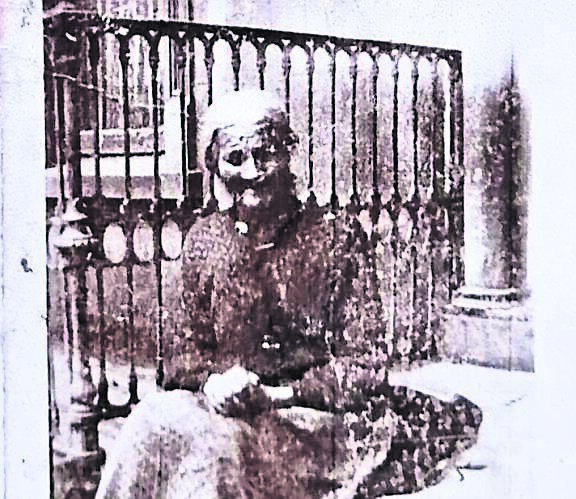
Frank Roche, evidently a keen historian, has also done some digging on the identity of that woman sitting outside 9, North Mall in the 19th century photograph supplied by Fintan Bloss.
If readers recall, it had the name Kate Davis written on the back. Fintan knew nothing of its origins but thought it interesting enough to share with other Throwback Thursday readers. As indeed it was, Fintan! Pictures from the 19th century are rare indeed, unless they are of the wealthy aristocrats who possessed both the time and money to have their pictures taken and retained for posterity. To have one of a more ordinary everyday person is a great find.
“The house next door, 8 North Mall, was the residence of one Alice Gubbins,” says Frank.
“She was originally from near Tramore. Alice died in 1896 and in her will she bequeathed two years; wages to each of her servants who were still in her employ. Unfortunately, she didn’t name them.”
No 9, North Mall, he continues, was a Davies residence, which made Frank wonder if Kate might have been Davies rather than Davis. “Obviously, I haven’t seen the handwriting of the inscription, but in any case Davis and Davies were often interchanged in older records.”
Another possibility Frank turned up in his diligent research was a Catherine Davies living at 20, Henry St in 1852, just 400m from North Mall. “I can’t say if she has any connection to the North Mall Davis or Davies, but she is much more likely to be nearer the age of the woman in the photo.”
Well aren’t you marvellous, Frank? There are records online, but few take as much trouble as you have done to burrow through them in search of elusive connections. It does bring a great sense of triumph, though, doesn’t it, when you get your hands on that tiny scrap of golden information amid a huge quarry of irrelevant entries.
Last week, we also showed a picture sent to us by Martin Byrne, from the opening of the new City Hall in 1936. He hoped that other readers might be able to identify some of the people (all men, by the way!) shown in the assembly. Pascal Lyons writes to say that the fourth man standing from the left is Gus Healy, after whom a municipal local baths were named. Any more of you out there who can put a name to others in the picture? It could be a father, a grandfather, a family friend. ..
I remember once hearing a noted family history researcher voicing his exasperation at finding so many family albums with pictures that had no information with them.
“If only everyone would write the details on the back - who is in the shot, who they are in relation to the others, and the date and the occasion, it would make them so much more valuable when it comes to writing up the story.”
And he was right. You might think, “oh we all know who that is,” but the day will come when those looking at the picture will not, and so it loses its place in history.
Is there anything here today that jogs your own memory? Or are there other reminiscences of times past which you could share on this page? Lent, St Patrick’s Day, Easter, First Communion, Confirmation? Tell us them.
Email jokerrigan1@gmail.com. Or leave a comment on our Facebook page: https://www.facebook.com/echolivecork.
